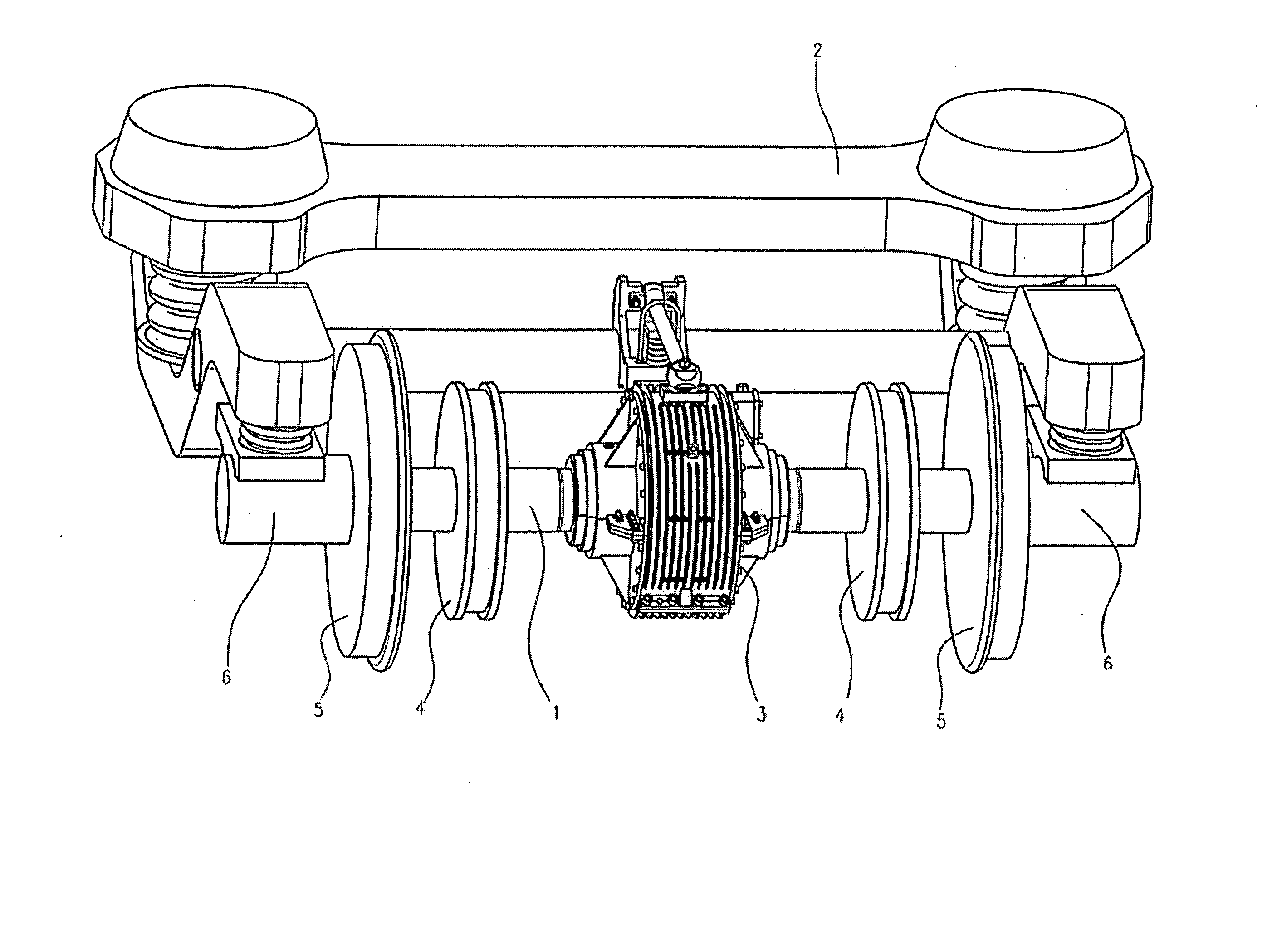Axle-driven generator for railway carriages and the like
a technology of axle-driven generators and carriages, which is applied in the direction of dynamo-electric machines, electrical apparatus, climate sustainability, etc., can solve the problems of low torque transmission, large diameter, and construction problems of axle-driven generators, and achieve the effect of eliminating complex transmission means
- Summary
- Abstract
- Description
- Claims
- Application Information
AI Technical Summary
Benefits of technology
Problems solved by technology
Method used
Image
Examples
Embodiment Construction
[0066] The stator housing 7 is of two-part construction and consists of an upper and a lower ring half, the two ring halves being joined together by connecting flanges 8a, 8b.
[0067] A receptacle 15 for attachment of the torque bracket illustrated in FIG. 7 is shown to be rotationally engaged with the outer circumference of the upper stator housing 7.
[0068]FIG. 2 shows that the wheelset shaft 1 passes through the shaft hole 14 in the rotor and is rotationally engaged with the rotor, a bearing shell 13, which is also separated and is formed from the bearing shell halves 13a, 13b, being visible.
[0069]FIG. 2 also shows the end-face bearing shield 10 which is screwed to the stator housing 7 using screw connections 32.
[0070] The bearing shield 10 is flanged to the bearing shell 13 using reinforcement ribs 16.
[0071] The opposing connecting flanges 11 shown in the drawing are also separated and consist of the connecting flanges 11a, 11b which are screwed together.
[0072] The two bearin...
PUM
 Login to View More
Login to View More Abstract
Description
Claims
Application Information
 Login to View More
Login to View More - R&D
- Intellectual Property
- Life Sciences
- Materials
- Tech Scout
- Unparalleled Data Quality
- Higher Quality Content
- 60% Fewer Hallucinations
Browse by: Latest US Patents, China's latest patents, Technical Efficacy Thesaurus, Application Domain, Technology Topic, Popular Technical Reports.
© 2025 PatSnap. All rights reserved.Legal|Privacy policy|Modern Slavery Act Transparency Statement|Sitemap|About US| Contact US: help@patsnap.com



